

Max Davies
How Audi, BMW, Honda, Mercedes-Benz, and Suzuki started out in Australia, and where they are now
2 Hours Ago
The entry-level Kia Carnival offers all of the refinement and practicality of higher grades without the price tag. It's not perfect, though.
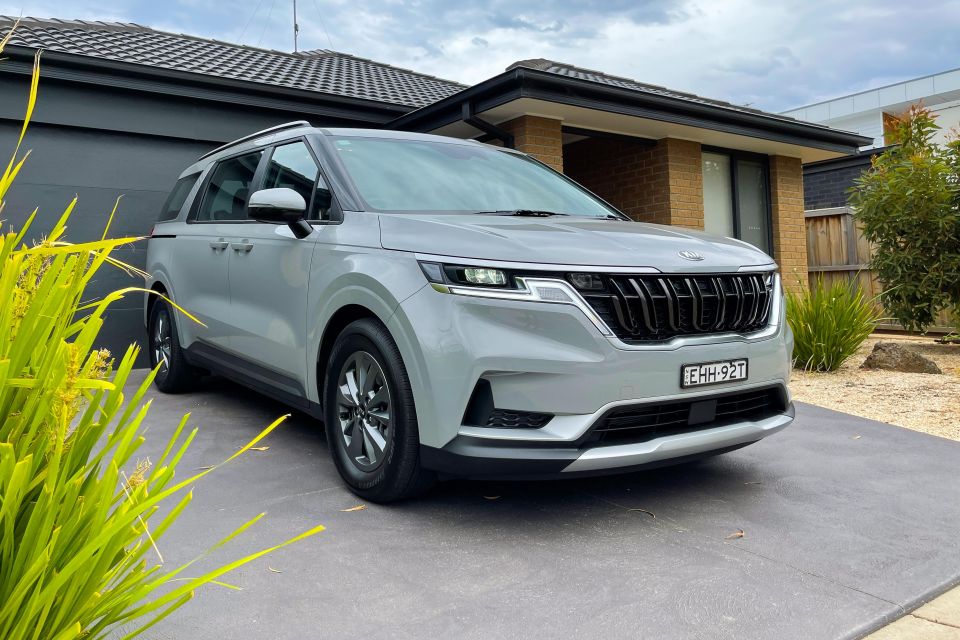


Marketplace Editor
New from
$48,880
excl. on-roads

Marketplace Editor
New from
$48,880
excl. on-roads


Marketplace Editor
New from
$48,880
excl. on-roads

Marketplace Editor
New from
$48,880
excl. on-roads
Quickly see how this car stacks up against its competition. Select any benchmark to see more details.
Where expert car reviews meet expert car buying – CarExpert gives you trusted advice, personalised service and real savings on your next new car.
The Kia Carnival has long been Australia’s favourite people mover, and with good reason.
Striking a near perfect balance of value, practicality, and style, the Carnival has demonstrated people movers don’t have to be ugly buses, and present compelling alternatives to usually compromised three-row SUVs.
Towards the tail-end of 2020 the Kia Carnival got a generational overhaul, bringing an all-new design, the latest and greatest infotainment and driver assistance technologies the company has to offer, plus even more interior space.
We’ve already sampled the range-topping Carnival Platinum with all the bells and whistles, but what about the base variant that is within easier reach of more Australian buyers?
Here, we’re testing the entry-level Carnival S Diesel to find out.

The 2021 Kia Carnival range kicks off at $46,880 before on-road costs for the entry-level Carnival S V6, or $50,390 drive-away.
On test we have the Carnival S Diesel, which retails for $48,880 before on-roads or $52,390 drive-away.
As you’ll see below, despite being a $50,000 base model the Carnival is loaded with kit, which only builds as you move up the ladder.
The Carnival tops out at $66,680 before on-roads or $69,990 drive-away for the flagship Carnival Platinum Diesel, putting it within reach of premium van-based people movers in the Mercedes-Benz V-Class and Volkswagen Multivan.

Buy your new car without the stress. It's fast, simple and completely free.

Great service from Travis and team, second time I have used this business would not hesitate to recommend them to anyone
Craig C.
Purchased a Ford Ranger in Sunshine Coast, QLD
CarExpert helped Craig save thousands on his Ford Ranger, now let us save you on your next new car.
Find a dealThe Kia Carnival S comes standard with the following features:
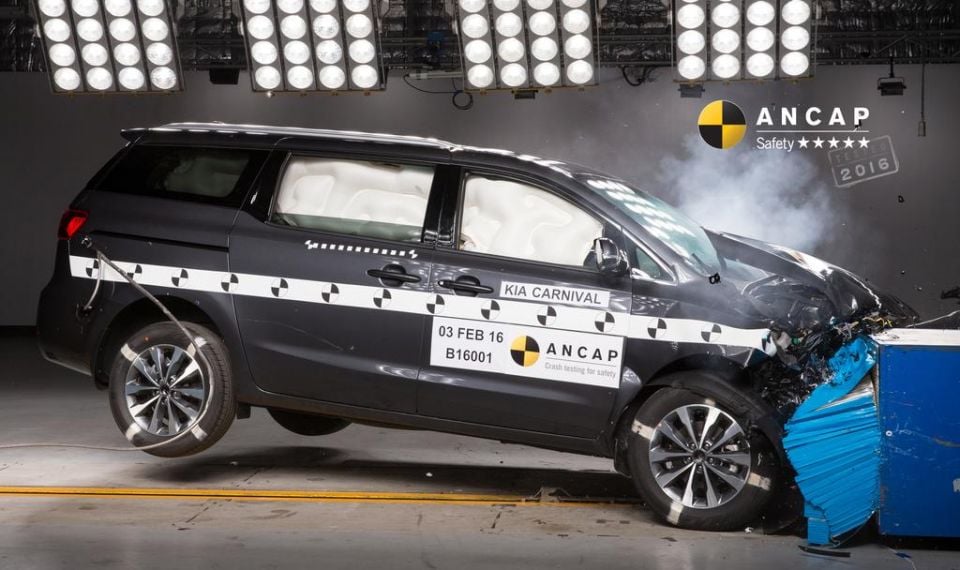
The latest iteration of the Kia Carnival is yet to be crash tested by local firm, ANCAP, though the previous generation managed a five-star rating.
Kia’s new-generation people mover launches without a front-centre airbag in Australia, which could prevent it from scoring the full five stars as required by the 2021 ANCAP/Euro NCAP criteria.
Front-centre airbag aside, the Carnival comes loaded with safety features, even in base S guise.
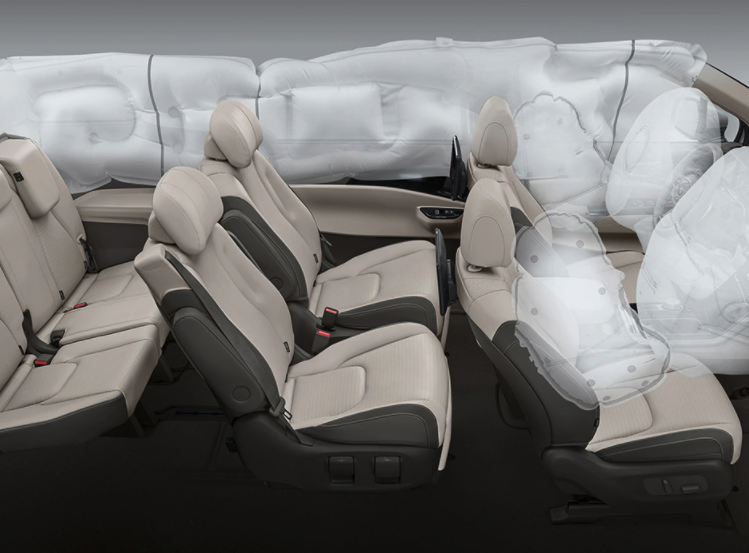
Seven airbags cover the cabin, including a driver knee airbag and curtain airbags that go all the way through to the third row of occupants.
All Carnival variants also come as standard with the following safety equipment:
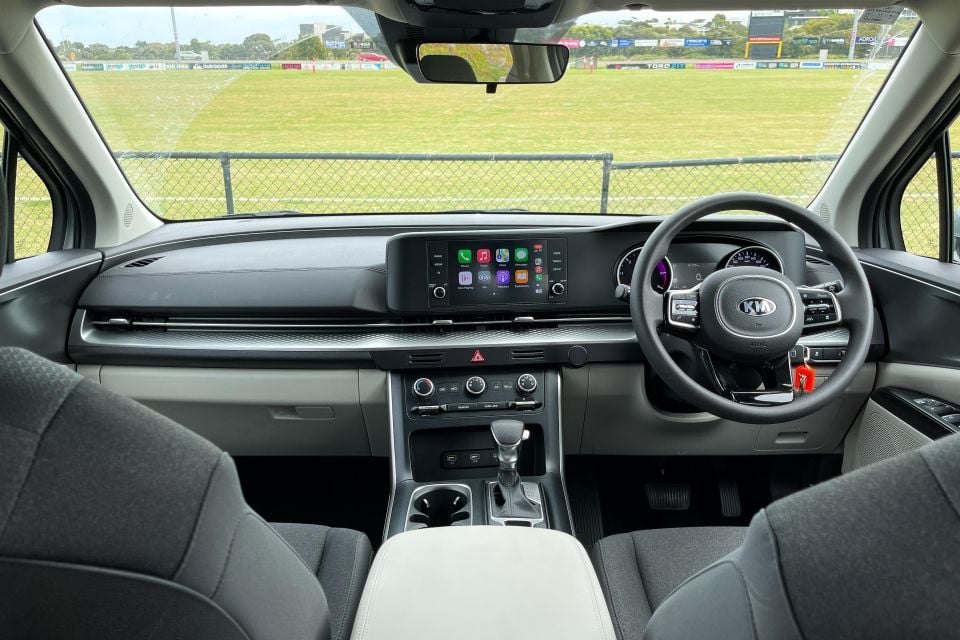
While this entry-level Carnival is clearly aimed at rental fleets, it certainly redefines what to expect from a fleet-spec bus.
The Carnival S has a plastic steering wheel and cloth trim, as well as a smaller 8.0-inch touchscreen compared to the 12.3-inch units with navigation included in higher grade.
Beyond that though, the bones are the same and it’s actually quite impressive.
The dash and door tops are soft-touch, and everything you can prod is padded and nicely finished.
Comfort and space is a clear priority here, and the Carnival delivers in spades across all three seating rows.
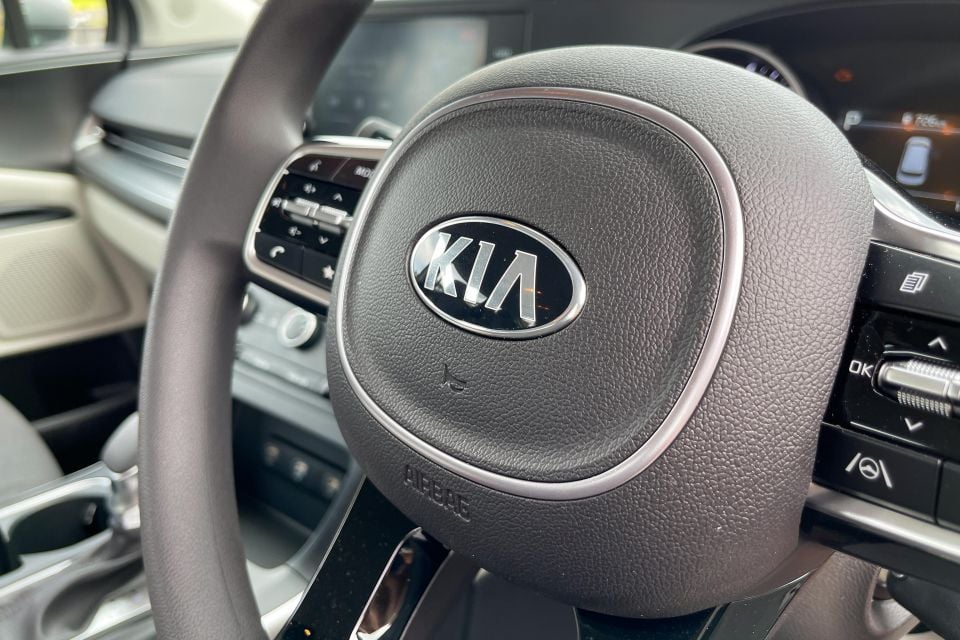
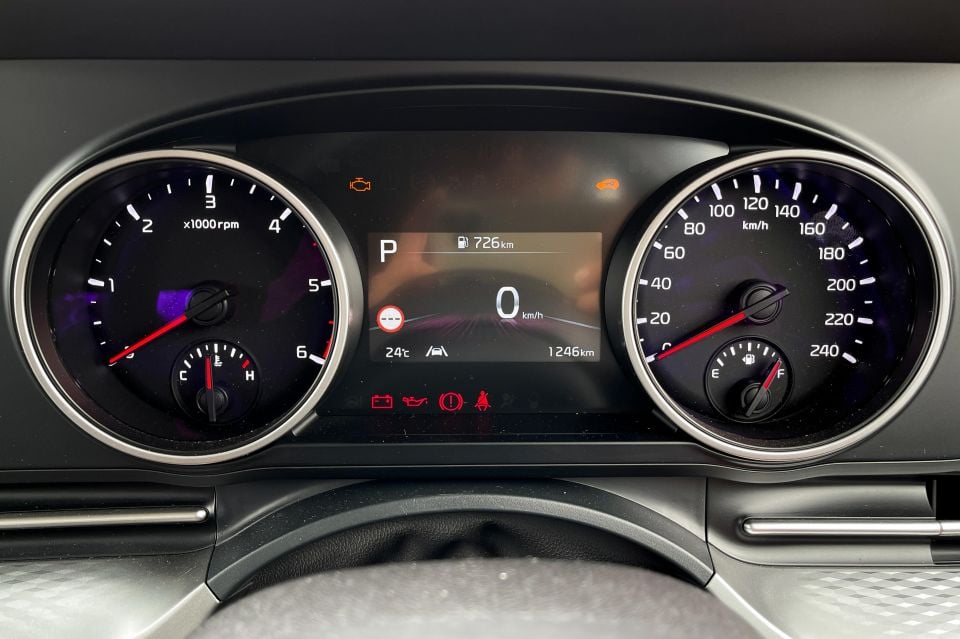
Sure, the displays and instrumentation are quite basic, and the lack of climate control air-conditioning means you may have to fiddle with the manual temperature control in places like Melbourne where you get four seasons in a day, but there’s plenty of kit thrown in.
The 8.0-inch touchscreen forgoes inbuilt navigation in favour of wireless Apple CarPlay and Android Auto, though in execution it’s not quite as high-end as you might think.
Every Hyundai/Kia we’ve sampled with this wireless system has been plagued with bugs and dropouts, and this Carnival was no different. It was infuriatingly temperamental and seemed to drop out in specific areas – perhaps something interferes with the phone and causes the mirroring function to drop out.
It got to the point where I was connecting my phone via Bluetooth on longer journeys to avoid the hassle.
When it’s working, though, it’s fine. Kia has already issued a statement confirming it’s working on a fix, though when this will be rolled out hasn’t been confirmed.
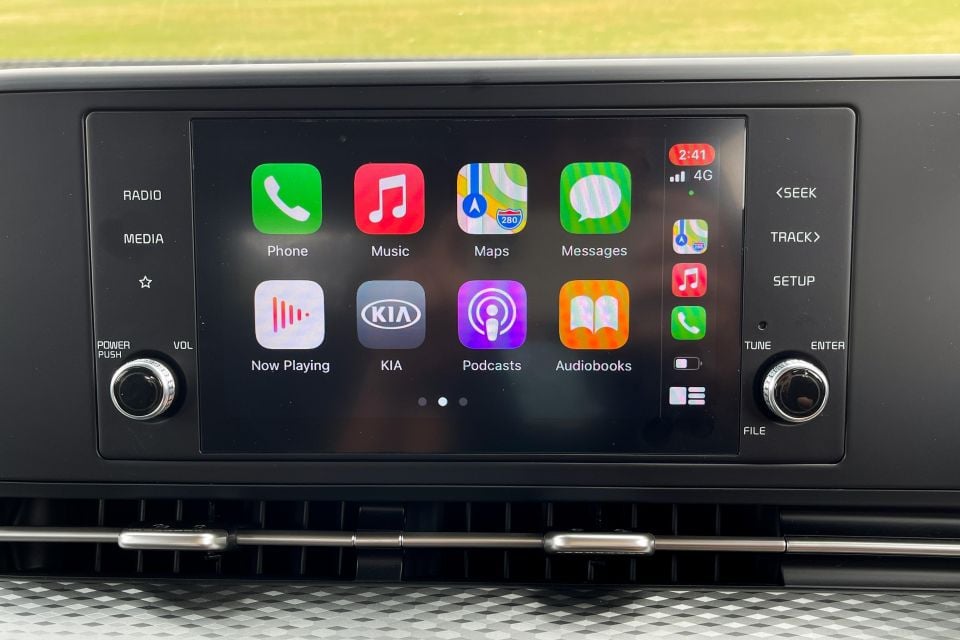
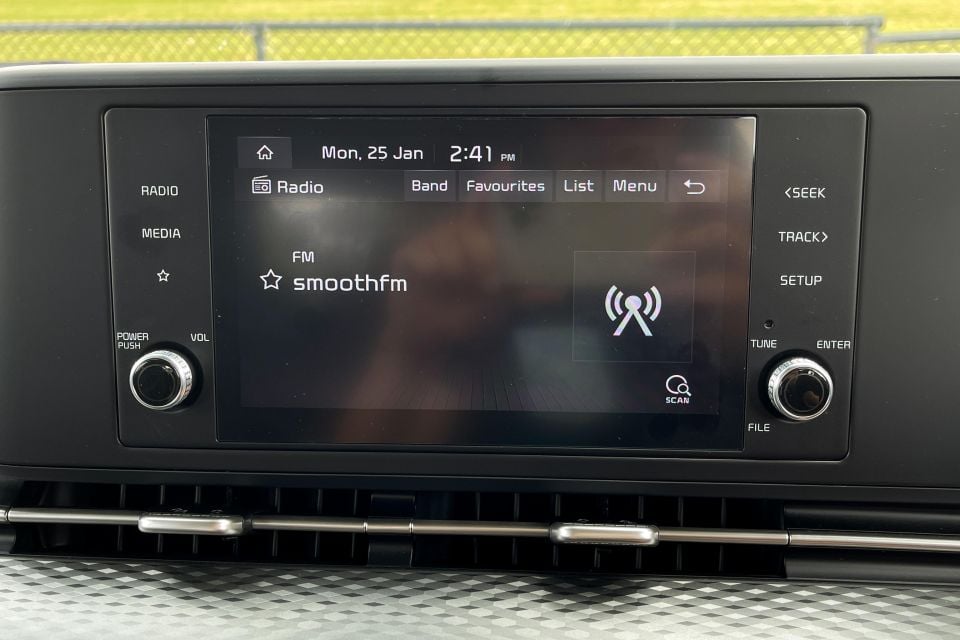
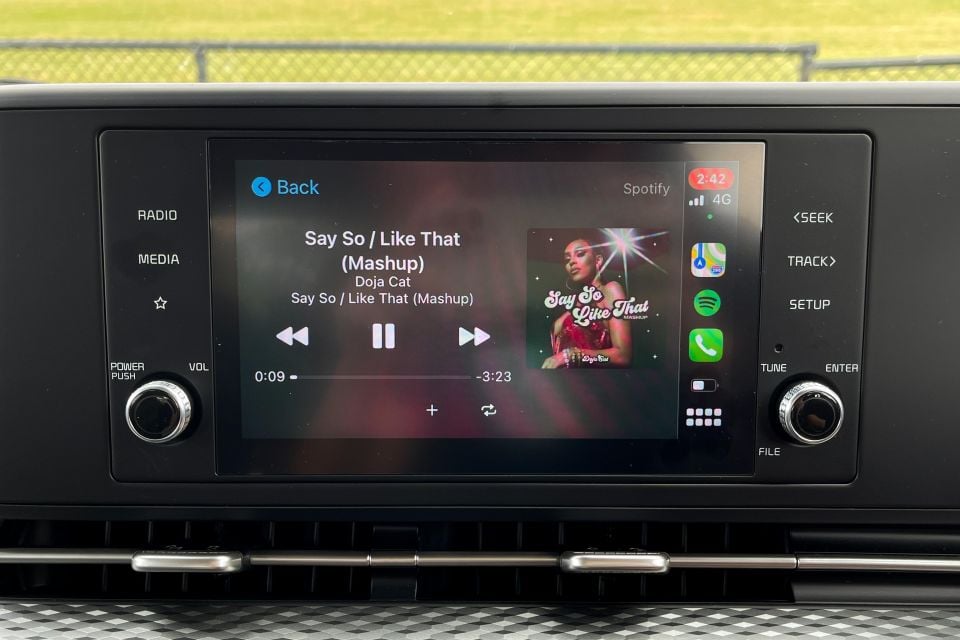
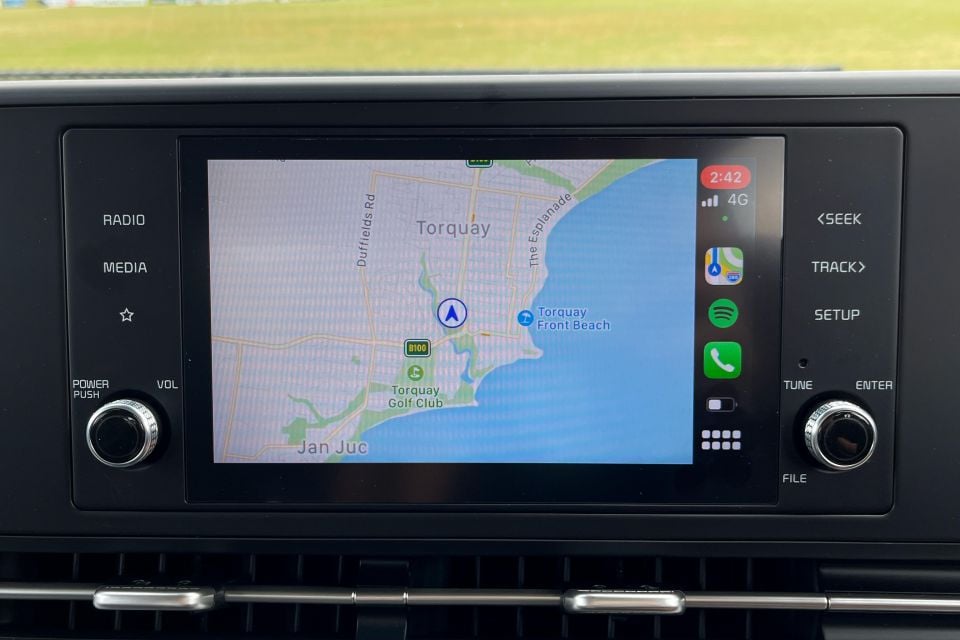
The touchscreen runs the basic version of Hyundai/Kia’s interface, with AM/FM radio and access to the vehicle’s trip computer – but that’s about it. It’s meant to be augmented with navigation and communication functions via smartphone mirroring, but when that stuff doesn’t work there’s not a lot else.
Audio quality from the sound system is good, with clear sound and the ability to adjust levels for a bit more bass.
As noted earlier there’s stacks of space up front even for taller occupants, though storage is a mixed bag. There’s a cubby under the centre stack and a large bin under the front-centre armrest, though the door bins are quite small.
A couple of cupholders up front help further, and there’s more further back in the cabin.
Moving into the second row, you can seat three adults in decent comfort even over a longer journey. Headroom and legroom is great, as is shoulder room. All three positions slide and recline individually, and the centre seat can even be removed entirely.
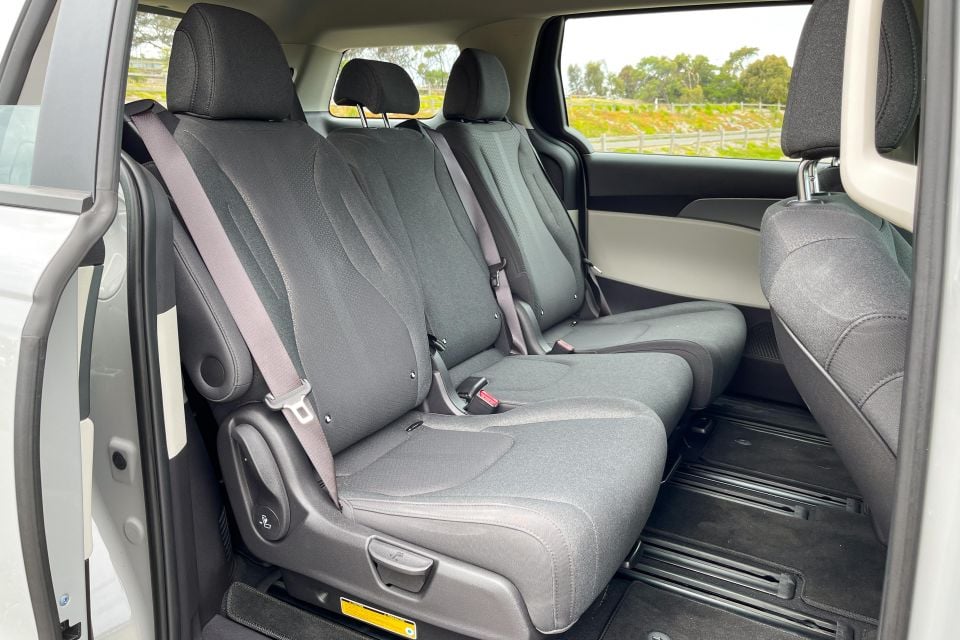
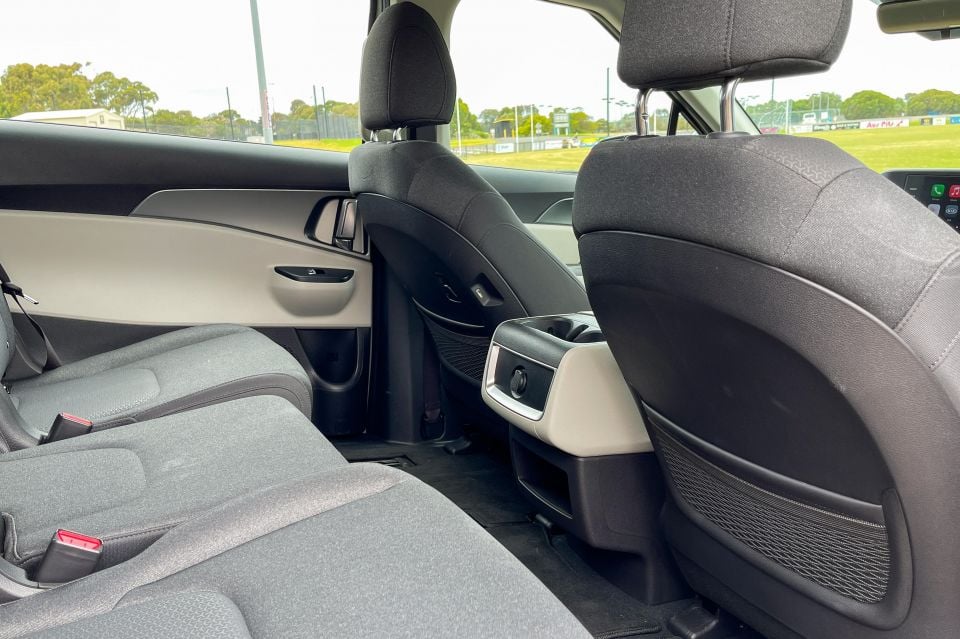
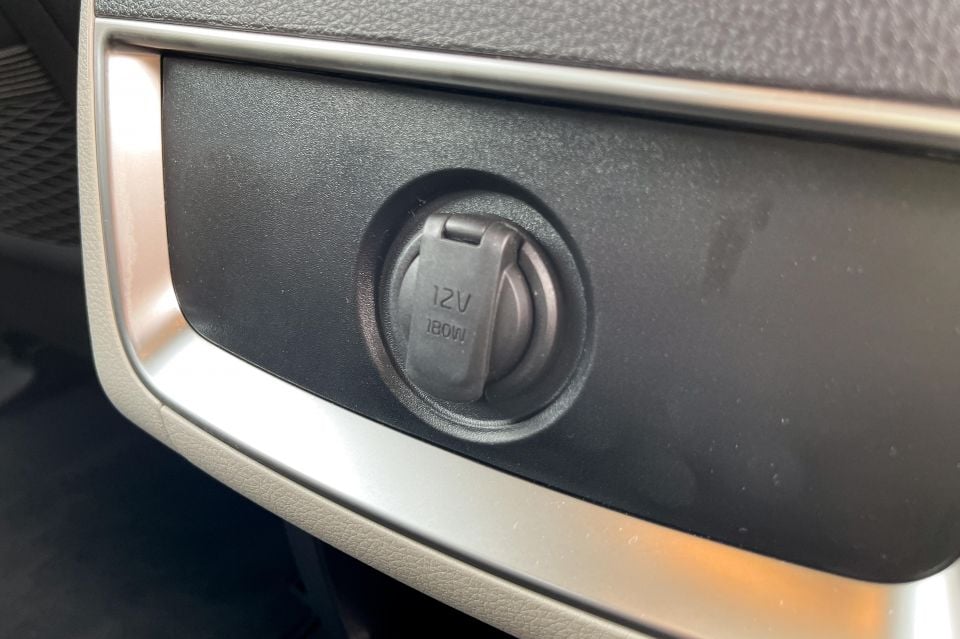

The outboard seats also have fold-down armrests for chair-like comfort, though unfortunately the Australian market misses out on the proper second-row captain’s chairs available in Korea.
Roof-mounted air vents supplement the air-con up front, though there’s no separate fan or climate controls for the second and third rows like you get on higher grades.
Other than that, the middle seat can be folded flat and used as a centre armrest with cupholders, there’s bottle holders in the doors, a 12V at the rear of the centre console above a small cubby, USB-A outlets on the front seatbacks, and map pockets.
Again, storage could be better given this vehicle is targeting families and fleets.
The third row is a demonstration of why you’d a people mover is the pick over an SUV if you regularly carry six or seven passengers.
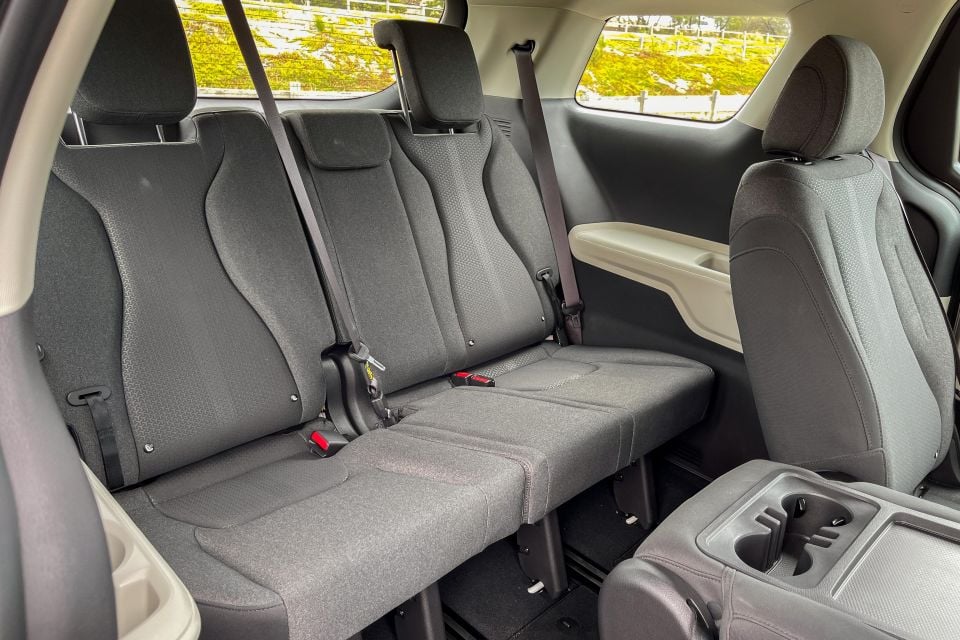

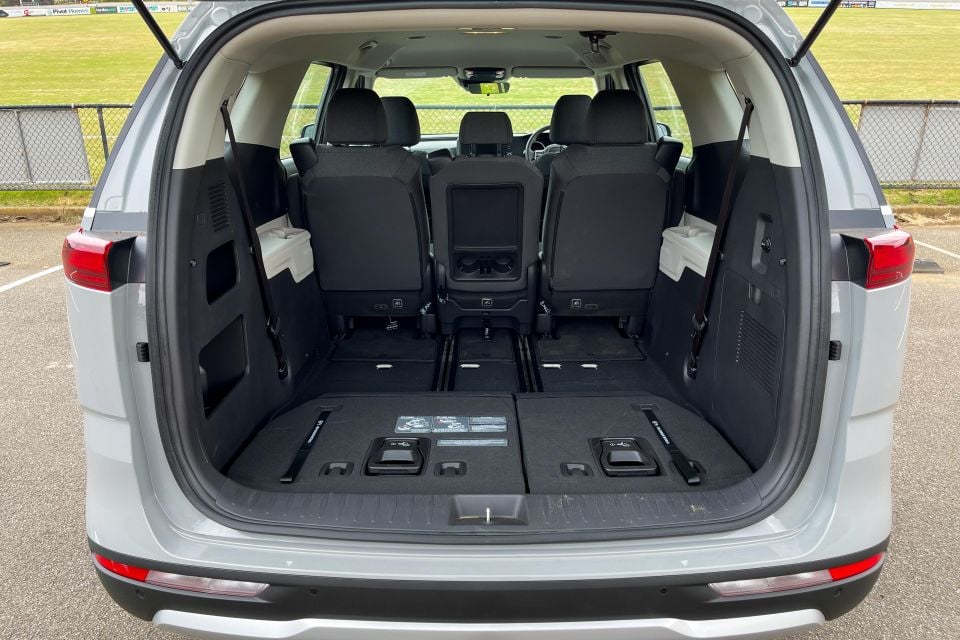
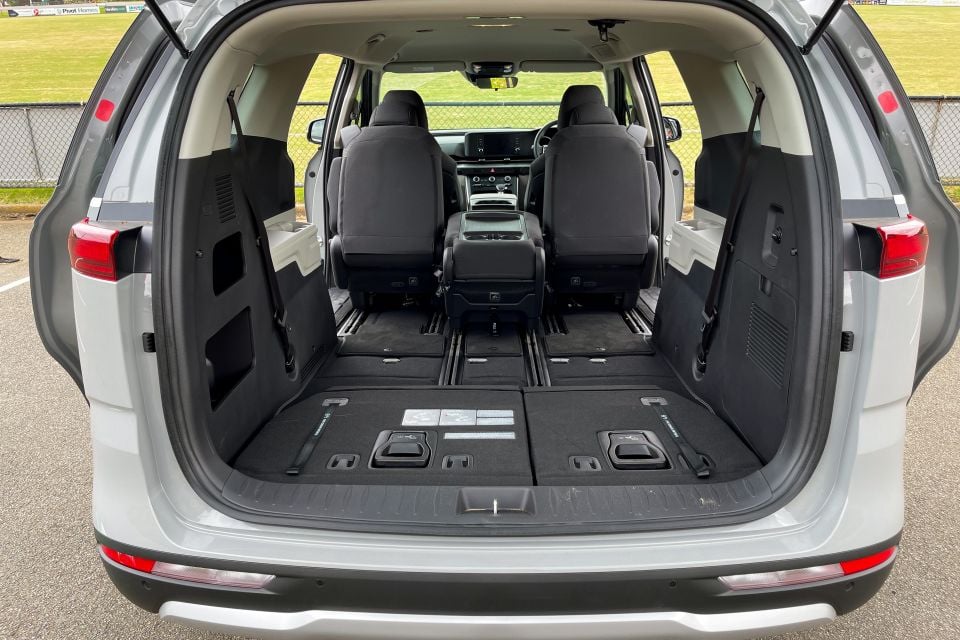
All Australian-delivered Carnivals are eight seaters, meaning a 2+3+3 seat layout. In Korea there’s also seven-, nine- and 11-seat interiors available.
While the centre seat in the third row is best left for kids, the outer two pews are fine for adults. Like the second row, there’s roof-mounted vents.
In total there’s five ISOFIX child seat mounts – worth noting if you have a lot of little ones in car seats. All three second-row seats have ISOFIX and top-tether points, as do the outer third-row positions.
As for luggage capacity, the Carnival is nothing short of huge.
Even with three rows in place, there’s 627L (VDA) which then expands to a positively capacious 2785L with the third row folded into the floor. If you do a lot of IKEA trips, this could make your life a lot easier.
There’s a temporary space-saver spare wheel, though it’s not mounted under the boot floor as that’s where the third row folds. Instead, it’s mounted under the floor next to the driver’s-side rear door.
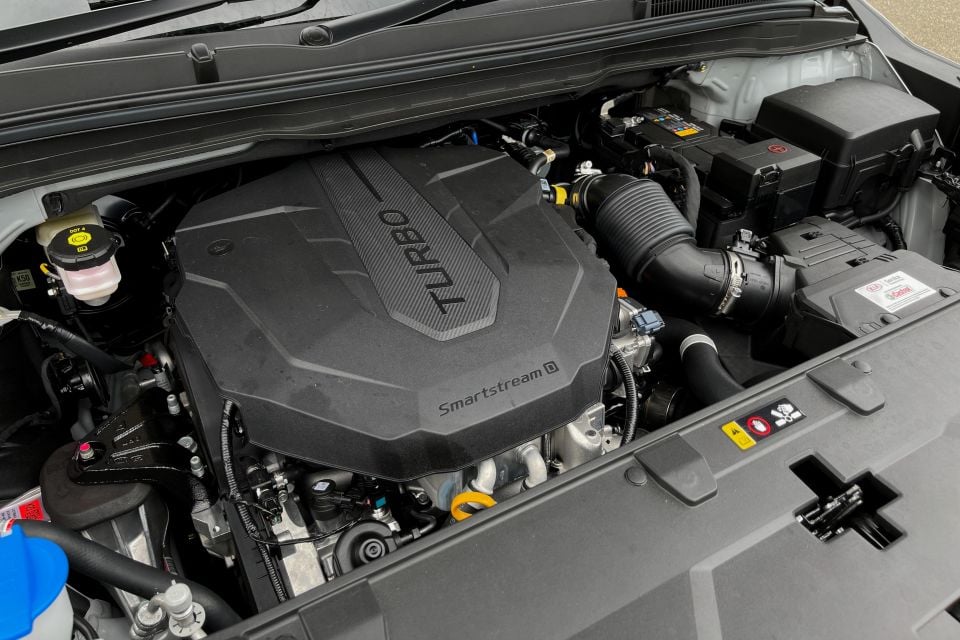
The vehicle on test is fitted with the optional 2.2-litre four-cylinder turbo-diesel, outputting 148kW (at 3800rpm) and 440Nm (between 1750 and 2750rpm).
All variants in Australia drive the front wheels through a conventional eight-speed automatic transmission – the related Kia Sorento uses an eight-speed dual-clutch auto in diesel guise.
As noted earlier, the Carnival is also available with a 216kW/355Nm 3.5-litre V6 petrol.
Claimed fuel consumption is rated at a frugal 6.5L/100km on the combined cycle for the diesel. We saw an indicated 7.2L/100km after 643km of mixed driving, which included a return trip to Torquay in Victoria’s south west.
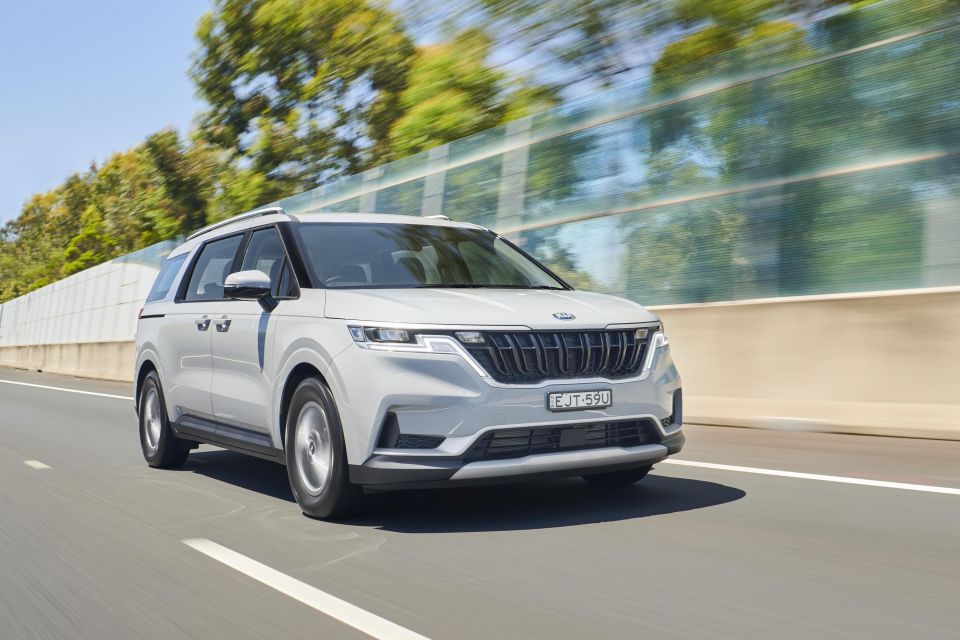
Nothing like a bus, that’s for sure.
Despite its hulking dimensions the Carnival is surprisingly easy to drive in town, and feels more like a long SUV to pilot than a van. That said, that’s long been the Carnival’s appeal.
The diesel four-pot is refined and keeps the typical agricultural clatter to a minimum, even under harder acceleration.
In terms of performance the oiler offers a solid wave of low-down torque that gets it along at a pleasing pace without blowing your socks off, even when all seats are in use.
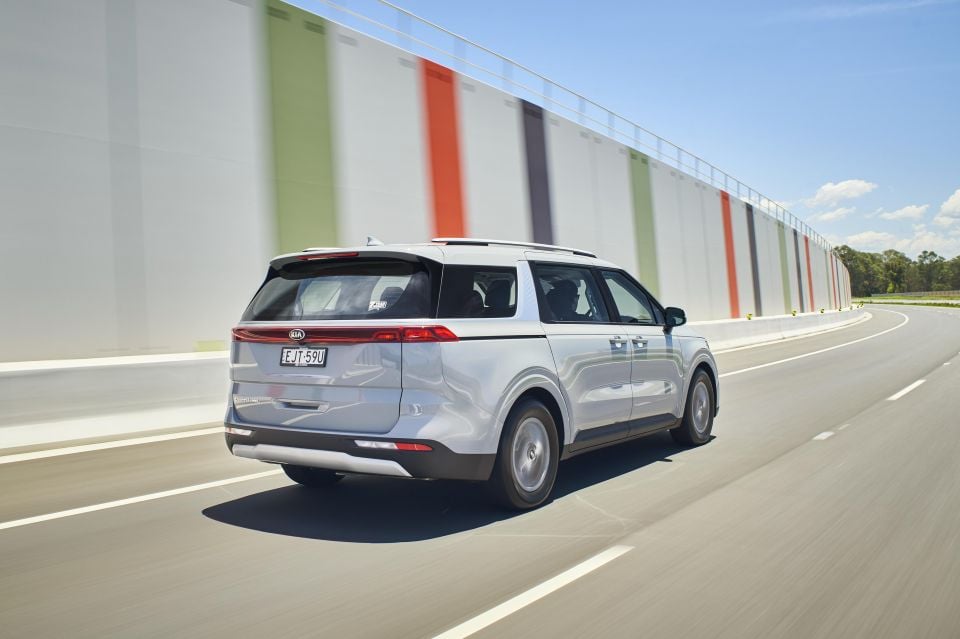
The eight-speed auto is likewise a clever thing, shifting cleanly, intuitively and decisively. We spent quite a while behind the wheel on a mix of freeway, city and urban driving and the feel of the driver controls is progressive, response and natural in terms of input to output.
As mentioned earlier, the Carnival retains an eight-speed torque converter auto in diesel guise unlike the related Sorento and Santa Fe, which have eight-speed dual-clutch transmissions on diesel models.
While the DCT used for its platform mates is admirably refined, the way the conventional auto operates across all driving situations feels like a better fit for a vehicle of this size, and rarely if ever feels elastic off the line or clumsy in shifts.
We noted during our launch drive of the flagship Platinum that the latest Carnival has arrived without a local steering tune to go with its Australian-developed suspension setup. I don’t think much needs to be changed when the local tune arrives.
Despite being a little light-on for weight and feedback, the Carnival is an easy steer and the existing setup suits this size of vehicle nicely. It’s pretty easy to manoeuvre in tight streets and carparks, and small parking spots or three-point turns don’t require a gym membership.
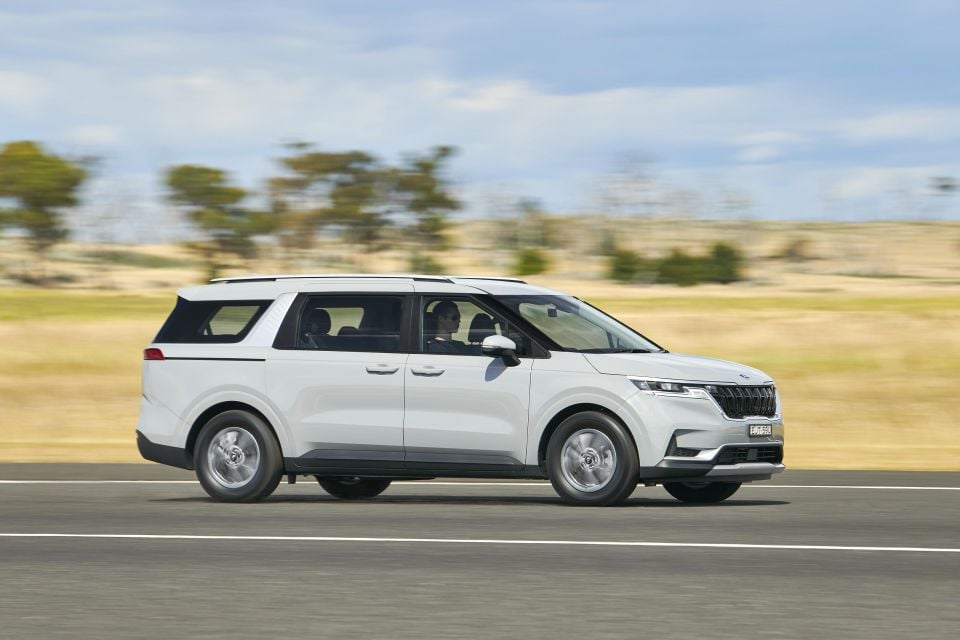
Where expert car reviews meet expert car buying – CarExpert gives you trusted advice, personalised service and real savings on your next new car.
The locally-tuned ride strikes a really good balance of comfort and handling, as I found out driving the Carnival down to Torquay over the Australia Day long weekend.
On the open road the Carnival S offers a cushy ride and excellent body control over undulations – laden with people and stuff or not – but then is also able to handle a twisty road without feeling like it’s going to fall over.
Erskine Falls near Lorne is accessed via a 100km/h winding mountain climb, and the Carnival handled with a surprising amount of poise, to the point where it was almost ‘fun’.
It feels planted, confident and eager to turn in, something you’d not associate with an eight-seat people mover weighing in at 2082kg (tare) before you load it up with passengers and luggage – which is what I had in it when I tackled this road.
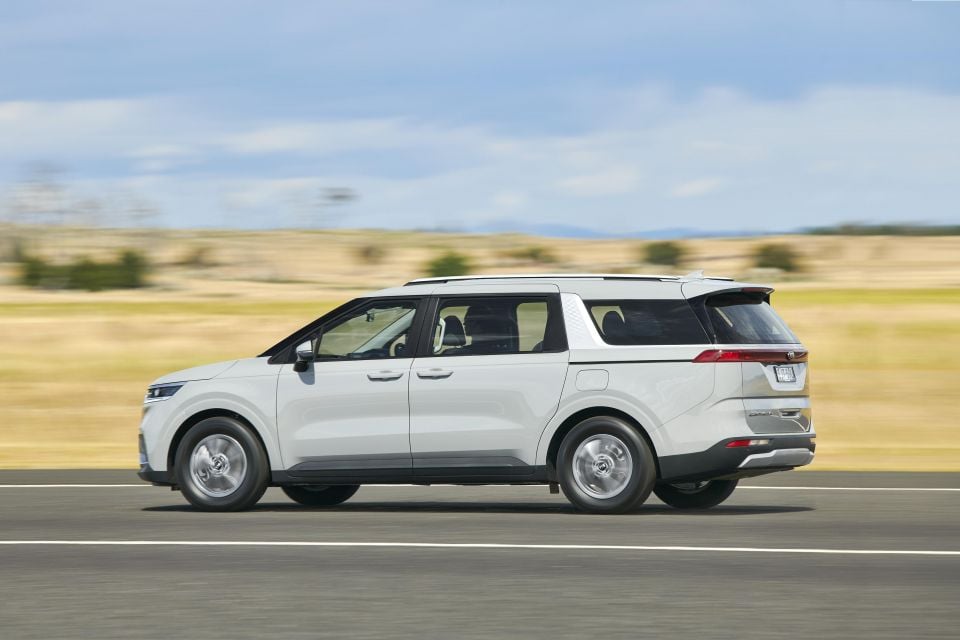
Refinement levels are also excellent. With the smaller 17-inch wheels and chubby 235/65 tyres, the Carnival’s cabin is barely infiltrated by road and wind noise, as we found out over some rougher sections of the Princes Fwy in Melbourne’s West.
The standard assistance suite makes piloting this big rig a lot easier. Kia’s lane-keep and lane centring system is one of the better on the market, though some will find the latter function a little too much, while the adaptive cruise control and blind-spot/rear cross-traffic assists worked intuitively.
Having the 360-degree camera system from the Platinum would be nice, but the standard rear-view feed and huge glasshouse means outward visibility is good and parking manoeuvrability, as noted earlier, isn’t too much to get used to.
Overall, I came away very impressed with how comfortable and refined the latest Carnival is in base form, having spent plenty of time with the previous generation.
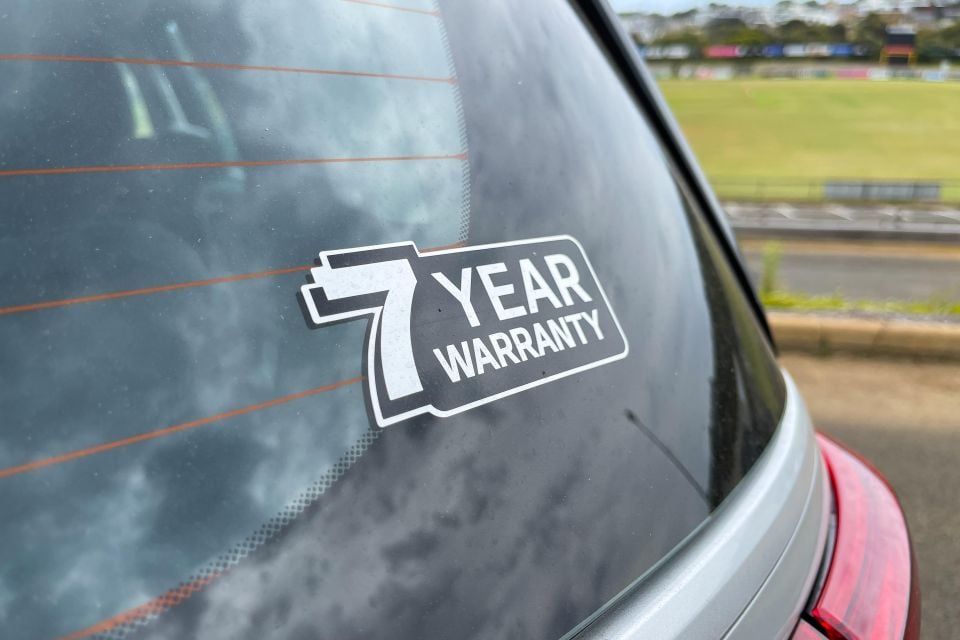
Like all Kias, the Carnival is covered by the brand’s seven-year, unlimited-kilometre warranty with capped-price servicing for the same period.
Kia also offers up to eight years of roadside assistance if you service your vehicle with an authorised Kia dealer, and the warranty is fully transferrable.
Scheduled maintenance is required every 12 months or 15,000 kilometres, whichever comes first.
The first seven visits will cost $349, $610, $423, $798, $393, $777 and $417 for the diesel, totalling $3767 for the first 105,000km.
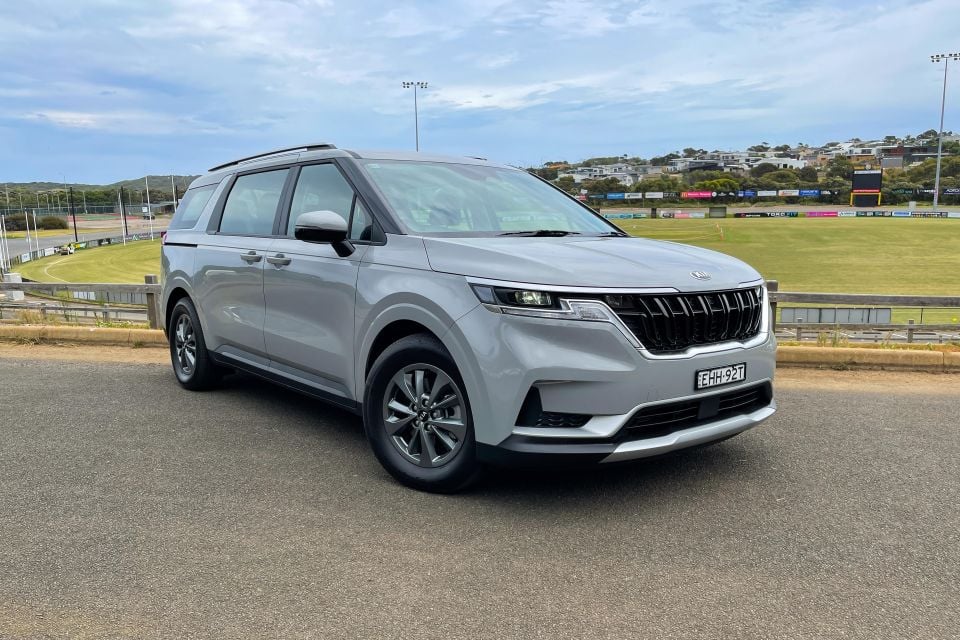
With SUVs the in-thing right now, the Carnival may not be on the shopping list for Australian families requiring seven to eight seats.
Forget what you think about people movers and seriously consider one if you carry in particular multiple adults on a regular basis though.
Even in base form the Carnival is comfortable, refined and laden with desirable features and technology. It certainly shows why the higher grades have historically been so popular when the ‘bare bones’ base models are this good.
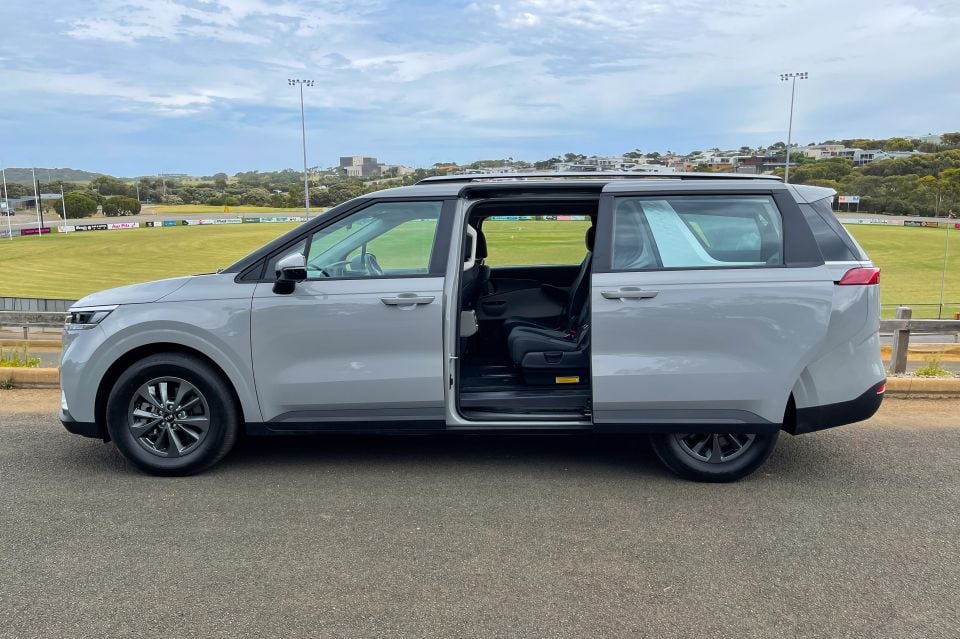
However, the S wouldn’t be my pick. The base infotainment system is bug-infested (though a fix is on the way), the plastic steering wheel is a bit meh and it’s on the wrong side of $50,000.
Personally, I’d recommend the one-from-base Si in diesel form as the value pick in the Carnival range. It picks up a leather steering wheel and shifter, gets nicer alloys, climate control all round, a 12.3-inch navigation system, and the cool LED tail lights with full-width light bar.
The $5400 upcharge may be a little steep for some, but it’s a worthwhile investment that makes a very very good car great.
Click the images for the full gallery
Where expert car reviews meet expert car buying – CarExpert gives you trusted advice, personalised service and real savings on your next new car.
James Wong is an automotive journalist and former PR consultant, recognised among Australia’s most prolific motoring writers.


Max Davies
2 Hours Ago


William Stopford
2 Hours Ago


Derek Fung
3 Hours Ago


Max Davies
10 Hours Ago


William Stopford
1 Day Ago


Ben Zachariah
1 Day Ago